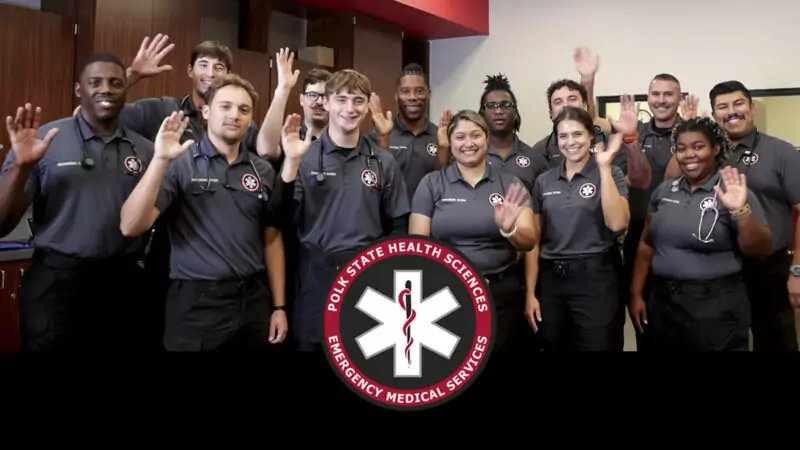Polk State EMS leads state in licensure pass rates, career readiness

Polk State College’s Emergency Medical Services (EMS) Program boasts the state’s highest pass rates for first attempts on the licensure exams for Emergency Medical Technician (EMT) and Paramedic, as well as for its cumulative pass rates of 100%. This far exceeds the national average of 70% and puts Polk State at the top of 47 EMT and Paramedic programs in Florida.
“We take our job very seriously here to educate and train our students to become the highly skilled paramedics our community needs,” EMS Program Director Frank Dunn said. “The facility we have here is state-of-the-art, the equipment is the latest technology, and the simulation experience we provide is as closely related to the field as we can make it.”
“This is one of very few places like this in the state of Florida.”
And the program is one that is committed to continuous improvement.
Polk State EMS recently received some enhancements in the form of mid-range fidelity patient simulators. Students vouch that the manikins, paired with the program’s quality instruction, bring the Polk State EMS experience as close as possible to the scenarios they encounter in the field as working emergency medical technicians and firefighters.
“Polk State is preparing me to become a successful paramedic because of the continuity between the equipment that we use in the lab and the equipment that we use in the field,” said Paramedic student Hercules Petts with Lakeland Fire Department. “There’s no second-guessing skills or the equipment that you’re using.”
Students in the current cohort represent agencies including Polk County Fire Rescue, Winter Haven Fire Department, and Lakeland Fire Department.
“Polk State is preparing me to become a successful paramedic because of the continuity between the equipment that we use in the lab and the equipment that we use in the field. There’s no second-guessing skills or the equipment that you’re using.”
“The equipment here is very interactive and things that I have seen [in the field],” said Paramedic student Anesa Johnson with WHFD. “It’s not an easy program, but that’s very good because you come out as a good paramedic.”
The program implemented the mid-range fidelity patient simulators – CAE Healthcare manikins – in the Fall 2023 Semester thanks to Higher Education Emergency Relief (HEERF) funds. Students benefit from two adult manikins, two child manikins, and one infant manikin.
The manikins can produce simulated vital signs, lung sounds, and functions of the eyes including dilations and changes in color for specific trauma responses or medical symptoms. They can also speak and record audio from a simulation that students can listen back to for corrective feedback.
“With our simulator manikins, they are able to interact with them and practice the skills that they use in the field as far as airway management, cardiovascular treatment, and the medications that work with the manikins,” Dunn explained. “The manikins that we use are about as close as we can get to an actual patient.”
This level of simulation and the high standard of the EMS Program are factors that attract aspiring emergency medical responders (EMR), technicians, and paramedics to Polk State.
“I would recommend Polk State to other students because of the standards,” said Paramedic student Griffin Ryan with LFD. “It’s the hardest standard, but because of that, you’ll be the most prepared going out into the field to save lives.”
Paramedic student Herbert Nabarete with PCFR completed his EMR and EMT training with Polk State.
“The hands-on we get to do with the lecture education is phenomenal overall,” he said. “You get to learn…, how the manikins can be manipulated into going into cardiac arrest or having certain symptoms that you’ve never really seen, or you rarely see [in the field].”
“It prepares you to experience it all,” he added, “that way you’re prepared once you go out there and put your hands on a real person.”
Polk State EMS accepts applications for its paramedic program during three cycles: March 15 through March 31 for the cohort starting in May, June 15 through July 15 for the cohort starting in August, and November 1 through November 30 for the cohort starting in January. More information is available at polk.edu/ems.

